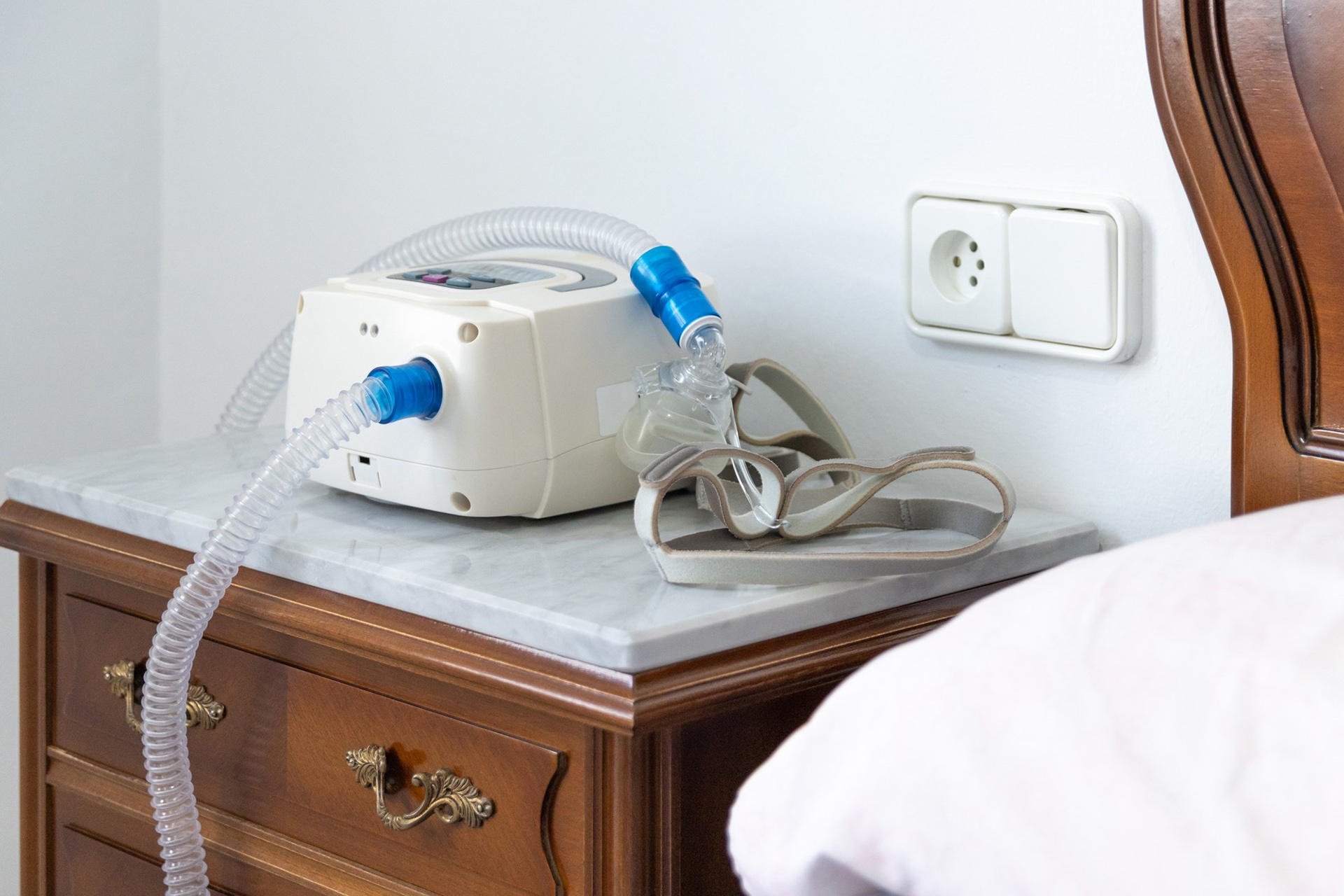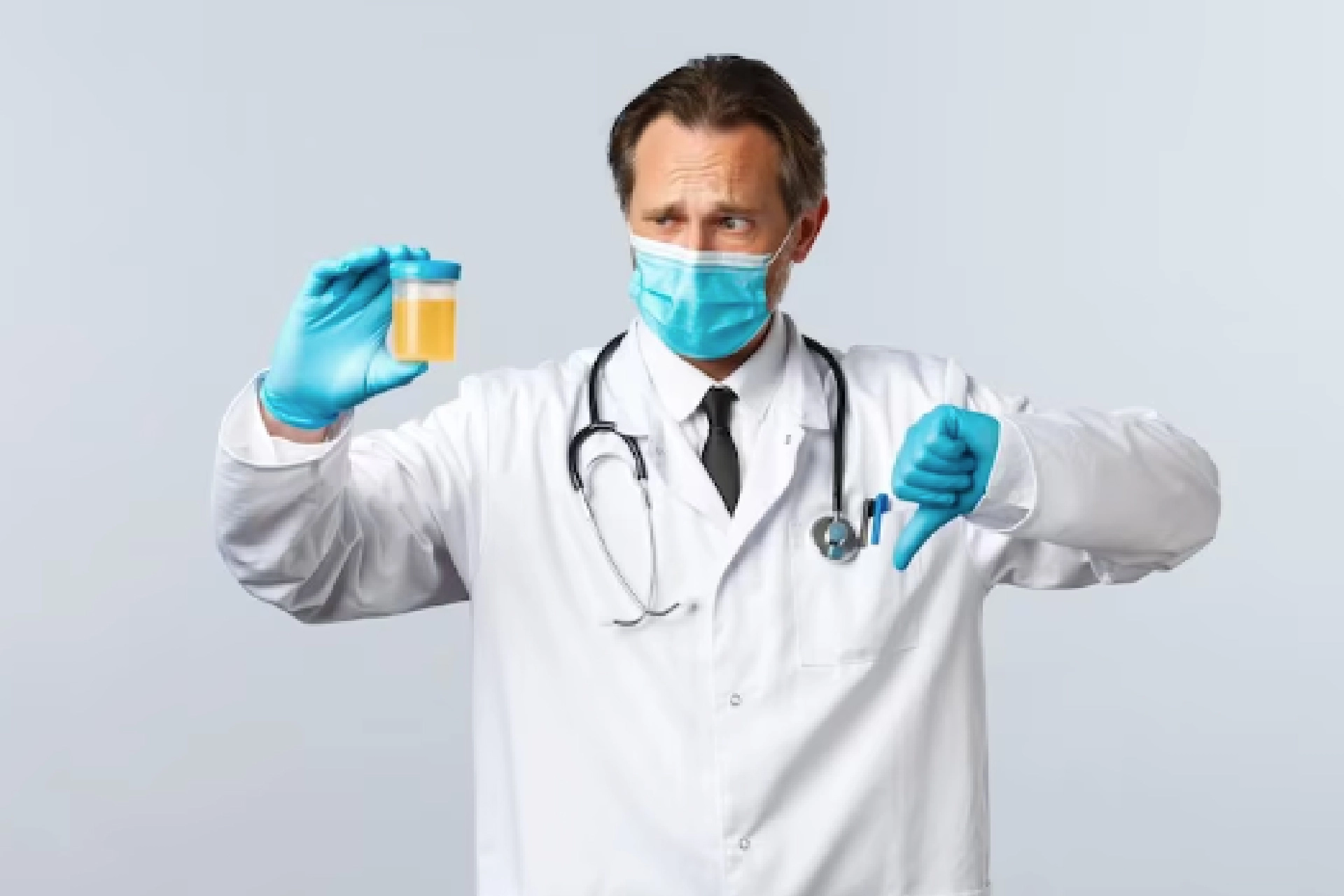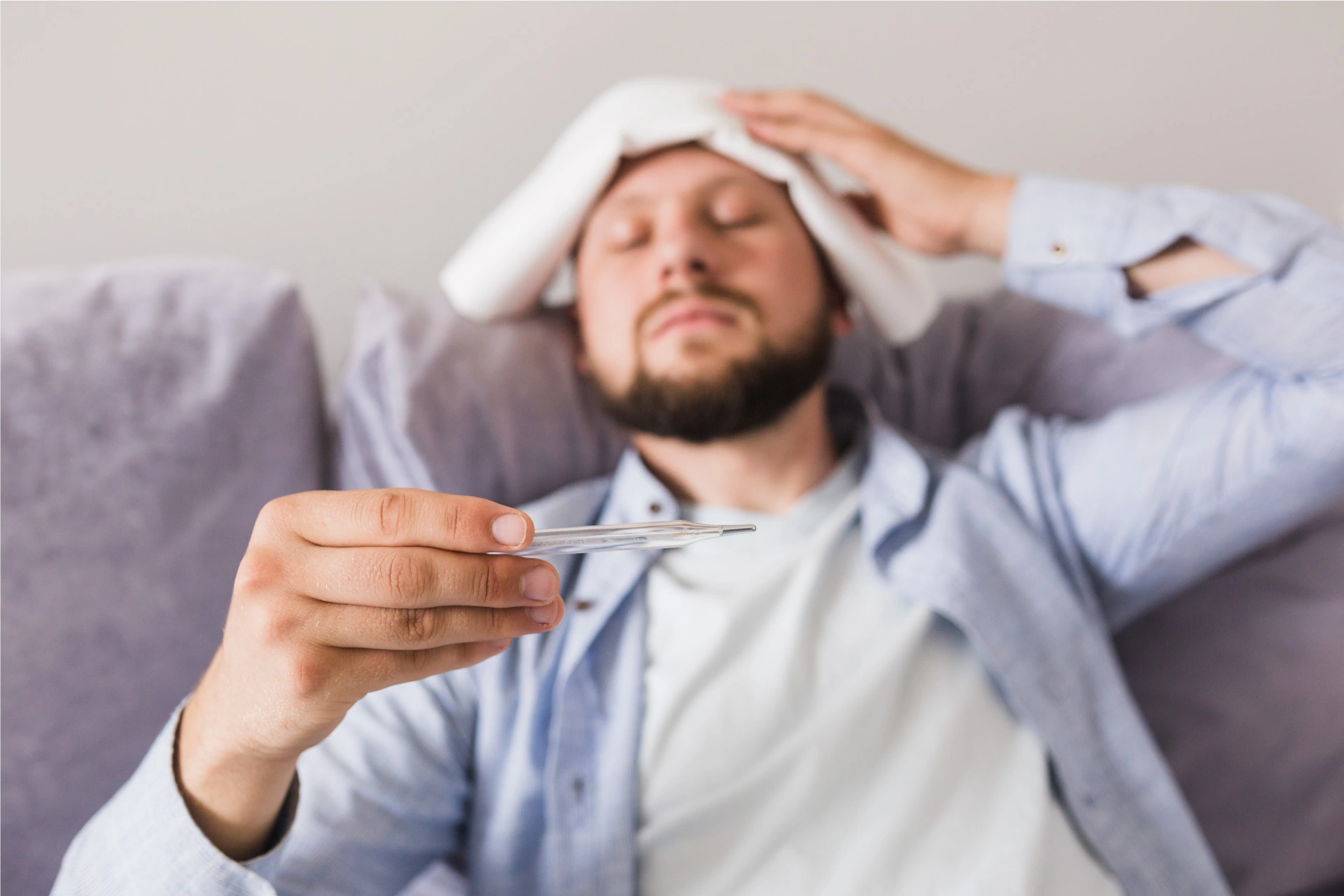General Health | 18 min read
Obstructive Sleep Apnea: Causes, Symptoms and Treatment
Medically reviewed by
Table of Content
Key Takeaways
- Obstructive sleep apnea can be severe if not treated on time
- OSA syndrome symptoms include drowsiness and disturbed sleep
- Age, weight and family history are risk factors for obstructive apnea
Have you ever imagined what would happen if your breathing stopped for a few seconds during sleep? Sounds scary, right? Obstructive sleep apnea (OSA) is exactly what this condition is called. In obstructive sleep apnea syndrome, your breathing stops for a few seconds and then starts again while you are in deep sleep. The International Classification of Diseases (ICD) recognizes this condition too, and for OSA, ICD-10 code is G47.33.
It is important to be aware of sleep apnea syndrome so you can get medical help on time. Repots conclude that this condition increases with age. A study done among a group of elderly people found that approximately 90% of men and 78% of women had OSA syndrome [1].
OSA syndrome is the most common type, but there are two more types of sleep apnea, central sleep apnea and complex sleep apnea. OSA occurs when a part or all of your upper airway tract is blocked during sleep. Due to this blockage, your diaphragm has to work hard to open the airway and take air into lungs. This makes your breathing shallow or it may even stop for a few seconds.
When you start breathing again, you may experience a sudden jerk in your body or make a loud gasp. Your sleep may also be disturbed but you may not be aware of your situation. If severe obstructive sleep apnea is left untreated, it can cause serious health ailments like heart diseases and high blood pressure. Read on for insight on this disorder and its symptoms.
What Exactly is Obstructive Sleep Apnea?
The illness known as obstructive sleep apnea (OSA) is brought on by repeated collapses of the upper airway while you sleep. It is the most typical sleep-related respiratory condition.
Usually, air should always enter the lungs smoothly from the mouth and nose, including during sleeping.
OSA occurs when the muscles holding your tongue and the soft palate in your throat become loose. This results in your airway shrinking or even closing, temporarily stopping your breathing.
Apnea, often known as an apneic episode, refers to instances when breathing entirely stops. With OSA, the usual airflow is sometimes interrupted throughout the night.
Even though sleep apnea can affect anybody, including infants, OSA is known to be most prevalent among older males. During menopause, the incidence increases so that postmenopausal women and men have identical rates.
OSA is frequently linked to snoring, particularly when the snoring is interspersed with stillness. This is because airflow squeezing through the constricted airway area causes snoring.
It is crucial to remember that not everyone who snores has OSA, and snoring is not always a sign of something potentially bad.
OSA that is left untreated can lead to major health issues like:
- Blood pressure is high (hypertension)
- Atrial fibrillation
- Diabetes
- Heart disease (abnormal heart rhythm)
- Thoracic hypertension
Complications must be identified early and properly treated.
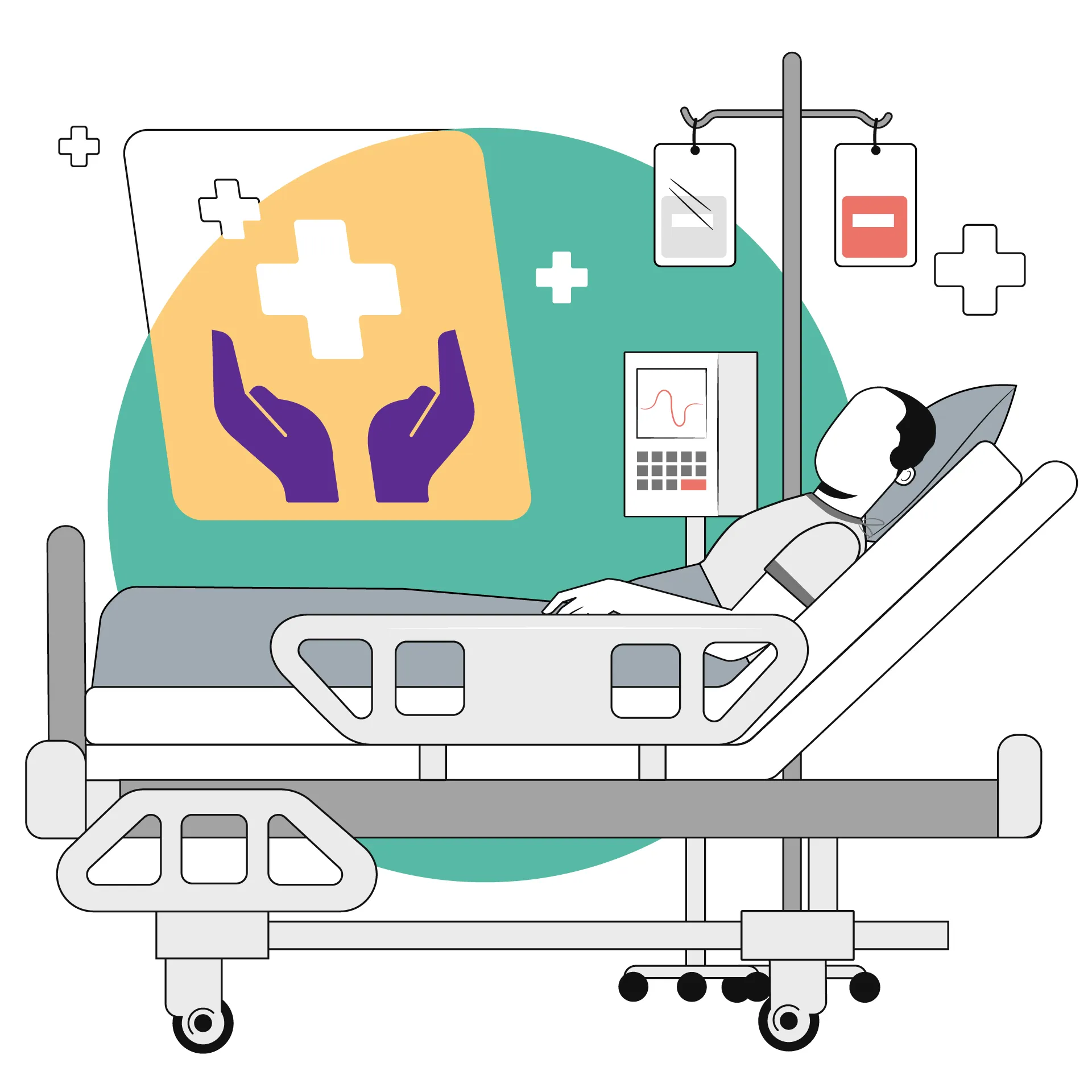
Who is Susceptible to Sleep Apnea?
Anybody can get sleep apnea, from young toddlers and infants to elderly people. Even so, certain situations and populations are more likely to experience obstructive sleep apnea (OSA) than others:
- Men and those born with a male gender preference before the age of 50
- At age 50, it impacts both women and those who were born with the gender ascribed to them (AFAB) equally
- Ageing people
- Obesity
- Those that are Black, Hispanic, or Asian in descent are more likely to experience it
Also, there are certain demographics where central sleep apnea is more prevalent:
- Those who use opioid painkillers
- Adults older than 60
- People with heart diseases, including congestive heart failure or atrial fibrillation. This may lead to the emergence of central episodes known as treatment-emergent central sleep
- Living in a high-altitude environment can result in central apnea
Symptoms of Obstructive Sleep Apnea
If you are facing this disorder, you may experience daytime sleepiness. Since the oxygen supply to your brain and other organs reduces, you may feel drowsy and have no clarity of thought in the morning.
There are numerous signs of sleep apnea, some more obvious than others. The signs consist of the following:
- Waking up Tired: Sleep apnea patients frequently feel exhausted and fatigued even after a full night of sleep
- Tired during the Day: In more extreme instances, this may make you drowsy when working, driving, or engaging in other tasks
- Snoring: Although it does not always happen, this is a common symptom of sleep apnea. Sleep apnea can, at times, exist without the patient snoring at all
- Mood Shifts: Anxiety and depression are frequent signs of sleep apnea
- Brain Performance Disruptions: They might include problems with memory, concentration, or other brain-related problems
- Constantly waking up in the middle of the night: Since most people have trouble remembering when or why they wake up, this symptom may be more difficult to detect. Individuals who do this frequently recall waking up for a different cause, such as heartburn or the need to use the restroom
- Breathing pauses while sleeping: While you are sleeping, a spouse, partner, or other loved one can notice these signs.
- Unusual breathing patterns: The characteristic breathing pattern known as Cheyne-Stokes breathing (CSB) is a symptom of central sleep apnea. Breathing is quick during CSB and becomes shallower before becoming completely non-existent. The patient would stop breathing for a few seconds before beginning again and repeating the pattern
- Night sweats: Sweating during the night and being restless
- Headaches: Headaches, particularly upon awakening, are quite common
- Out of breath upon awakening: Waking up with a sense of being out of breath or choking.
- Insomnia: Inability to fall asleep and wake up during the night.
- Dysfunction in sexual behaviour: The hormonal balances in your body can get disrupted by illnesses like sleep apnea, which can result in issues like erectile dysfunction.
So, summing up, with obstructive sleep apnea, symptoms that you may experience include:
- Drowsiness
- Disturbed sleeping patterns
- Severe headaches in the morning
- Disturbance in sleeping throughout the night
- Forgetfulness
- Grumpiness
- High blood pressure
- Low concentration in your daily routine
- Rapid mood swings
- Loud snoring
- A sore throat when you wake up in the morning
Children With Sleep Apnea
Children may develop sleep apnea in a few different ways. Children with sleep apnea may exhibit the following signs:
- Hyperactivity, difficulty focusing, or subpar academic performance. This may resemble attention-deficit hyperactivity disorder symptoms (ADHD)
- Snoring loudly
- Bedwetting
- Frequently moving your arms or legs while you sleep
- Sleeping with their neck stretched or in strange positions
- Night sweats or reflux (heartburn)
Causes of Obstructive Sleep Apnea
The soft palate and base of the tongue periodically collapsing into the upper airway while sleeping is the primary mechanism of OSA.
Anatomical Causes
Regular air movement may be hampered by the nose, mouth, or throat's anatomical features. Among the potential contributors are abnormalities like:
- Smallness of the nose
- A collapsed nasal valve
- The nasal septum is crooked
- Turbinate hypertrophy
- Elongated soft palate
- Enlarged uvula
- Enlarged tonsils
- Throat constriction (posterior oropharynx)
- Highly arched palate
- A midface or upper jaw deficiency (maxilla)
- Loss of teeth (edentulousness)
- Increased tongue size (macroglossia)
- Reduced jaw retraction (micrognathia or retrognathia of the mandible)
Additional structural variations that restrict airflow and may result in persistent OSA are inherited traits brought on by genetic or developmental variations.
Genetics
The likelihood that OSA will run in families increases since some risk factors for the illness may be genetically connected, occasionally tied to syndromes. Apnea-hypopnea index (AHI) variation can be explained by genetic variables in about 40% of cases. The following genes have been identified or are suspected of being risk factors for sleep apnea:
- TNF-α
- sPTGER3
- sLPAR1
- sANGPT2
- sGPR83
- sARRB1
- sHIF‐1α
Genetic Conditions
The anatomical and physiological consequences of known congenital diseases directly bring on some instances of OSA. Differences in craniofacial shape and how the body reacts to safeguard breathing when sleeping may be among them.
The following are a few genetic syndromes linked to sleep apnea:
- Down syndrome (trisomy 21)
- Pierre-Robin syndrome
- Ehlers-Danlos syndrome
- Beckwith-Wiedemann syndrome
- Congenital central hypoventilation syndrome (CCHS)
Other Causes
Some transient episodes of OSA, such as those brought on by colds, allergies, tonsillitis, adenoiditis, and tongue swelling, may be brought on by an infection or inflammation of the soft tissues lining the airway.
Allergic Rhinitis
The likelihood of developing OSA may be increased by allergic rhinitis, a disorder marked by nasal congestion and frequently attributed to environmental or home allergens.
Obesity
Airway collapse during sleep can become more frequent if there are fat deposits (also known as adipose tissue) along the throat and at the base of the tongue. Adipose tissue is associated with hormonal alterations and an increase in immunological signals in addition to physical restriction.
Metabolic Conditions
Breathing problems may become worse as a result of metabolic abnormalities. For instance, nearly 70% of people with diabetes have some degree of OSA, and the cortisol this illness releases may make it harder for them to control their blood sugar levels.
Sex Hormones
Early-life progesterone and oestrogen actions appear to shield women from the development of sleep apnea. At the same time, men have a higher risk of the condition, which may be linked to testosterone's effects. In addition, women are more at risk for sleep apnea during menopause, after removing their ovaries, and when they have polycystic ovarian syndrome.
Sleeping Posture
The capacity to maintain an open airway when sleeping might be significantly impacted by sleep posture. Particularly when mouth breathing is involved, the supine position (lying on one's back) has the most impact. The ideal neck position for maximizing airflow through the throat is neutral to extended.
REM Sleep
Skeletal muscular relaxation is a component of REM, which helps to inhibit dream acting. The musculature of the airways is, therefore, further impacted by the loss of muscle tone, further causing collapse. Particularly in the context of obesity, which may increase hypoventilation, leading to lengthier sleep apnea episodes and greater oxygen desaturation. It is also a typical reason for waking up in the middle of the night or early in the morning, which adds to insomnia.
Age
Infants: Premature delivery is a significant risk factor for developing OSA earlier in life. Consequently, the degree of facial and respiratory development seems to impact a child's likelihood of developing sleep apnea.
Elderly: Due to declining brain function in areas responsible for neuromuscular activity, loss of muscle tone along the airway, and greater rates of denture use, elderly adults may have OSA at even higher rates (and removal during sleep affecting jaw and tongue positioning).
Drinking Alcohol
Alcohol consumption before night may hurt breathing as you sleep. It is a well-known muscle relaxant and has the power to ease the airway's muscles. Wine's histamines may also cause nasal congestion. Drinking alcohol can make both snoring and sleep apnea worse.
Smoking
Smoking irritates the mucosa that lines the airway, which may worsen snoring and increase the risk of sleep apnea in susceptible people.
Lack of Vitamin D
A vitamin d deficiency may increase the risk of developing sleep apnea and disturbs sleep.
Surgery
In those who are susceptible, surgery may increase or contribute to sleep apnea. Sedatives, muscle relaxants or paralytics, and narcotic painkillers may all be used during anaesthesia, increasing the likelihood of developing sleep apnea. The manipulation of the throat's tissue during intubation in a surgical setting can also result in swelling (upper airway oedema) and problems.
Medications
Benzodiazepines, opioid or narcotic painkillers, muscle relaxants, and other prescription drugs may cause sleep apnea
How Does Sleep Apnea Affect One’s Sleep Cycle?
The brain adjusts our breathing, heart rate, blood pressure, and other bodily functions when required. Apnea or hypopnea can cause the patient’s blood oxygen levels to fall when they stop breathing.
- Apnea: When the patient stops breathing while they're asleep or have almost no airflow.
- Hypopnea: "Under-breathing" or "low breathing,". This signifies that the patient isn't breathing enough to keep their blood's oxygen levels stable.
The brain responds to blood oxygen levels dropping due to either apnea or hypopnea by waking the patient up for just long enough for them to start breathing normally again. The brain then restarts the sleep cycle after breathing is normal again.
These interruptions will occur more frequently the more serious the patient’s sleep apnea is. Apnea/hypopnea index (AHI) is the average hourly frequency of apnea or hypopnea events—moments when a person stops breathing. This is how serious it is:
Mild Sleep Apnea
An individual with mild sleep apnea has an AHI between 5 and 15. This indicates that individuals experience 5 to 15 apnea or hypopnea episodes every hour. Yet, medical professionals also take these symptoms into account. If you don't exhibit any other symptoms, they might not think it's serious enough to treat.
Moderate Sleep Apnea
Individuals with moderate sleep apnea experience between 15 and 29 episodes per hour. That indicates that an individual who sleeps for eight hours stops breathing or awakens between 120 and 239 times.
Severe Sleep Apnea
Individuals with severe sleep apnea wake up 30 times or more in an hour. That indicates that over eight hours of sleep, individuals stop breathing and wake up 240 or more times.
Any stage of sleep can be affected by obstructive episodes, which are extremely fleeting. They are most frequent during Stages 1 and 2 of sleeping, as well as REM sleep. People frequently forget apnea occurrences for this reason, which means they might not be aware they have a problem until the symptoms become apparent.
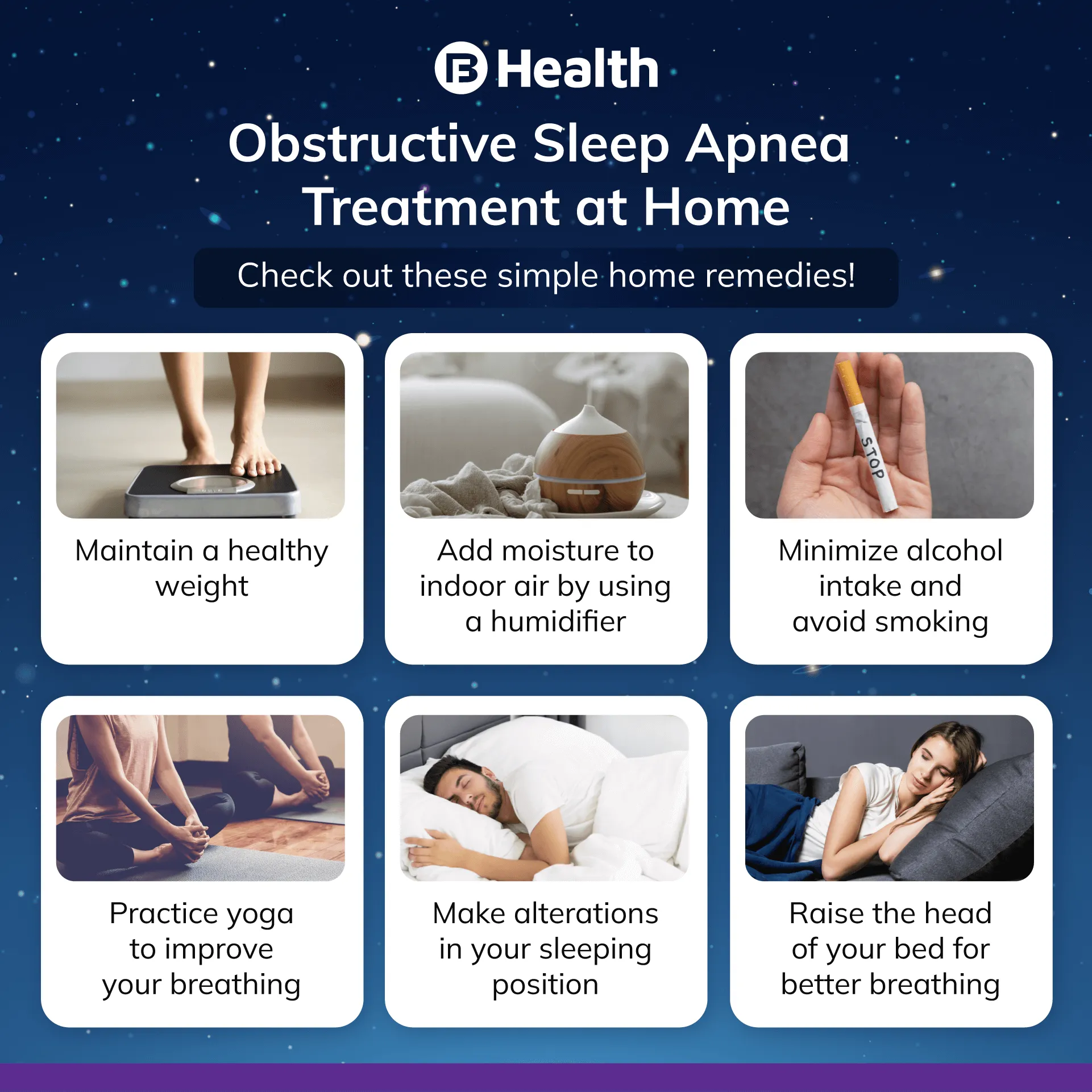
Obstructive Sleep Apnea Risk Factors
You are more likely to acquire this condition if:
- You are a male
- Have a family history of this condition
- Have smoking habits
- You have conditions like diabetes, high blood pressure, COPD
- You are obese or overweight
- There are excess tissues at the back of your throat that block your airway
- Your neck is thick or large
Obstructive Sleep Apnea Complications
- Heart ailments
- Eye problems
- Concentration issues
- Feeling sleepy during daytime
- Metabolic disorders
- Pregnancy problems
How is Obstructive Sleep Apnea (OSA) Diagnosed?
An extensive history and physical examination are the first steps in diagnosing sleep apnea. Important indicators include snoring and a history of daytime sleepiness.
To find any physical issues connected to sleep apnea, your doctor will check your head and neck. In addition, your doctor might ask you to complete a questionnaire regarding your sleep patterns, quality of sleep, and daytime sleepiness.
After discussing your sleep patterns, doctors may ask you to undergo a physical examination. A sleep study may be conducted either at your home or in a sleep lab. You’ll have to wear monitors so that these factors can be measured:
After discussing your sleep patterns, doctors may ask you to undergo a physical examination. A sleep study may be conducted either at your home or in a sleep lab. You’ll have to wear monitors so that these factors can be measured:
- Eye movement
- Oxygen levels in your blood
- Heartbeat rate
- Activity of your muscles
- Arm and leg movements
- Breathing patterns
- Electrical activity of brain
- Airflow
The OSA evaluation may occasionally be carried out at home without a technician. Yet only certain people can be diagnosed with OSA with home sleep apnea testing. If other sleep problems are suspected, it does not serve as a replacement for other diagnostic procedures.
Tests to Detect Obstructive Sleep Apnea
Polysomnography (PSG)
You spend the night in a hospital or sleep lab attached to a range of monitoring equipment that captures physiologic data during polysomnography. For example, sleep-disordered breathing and many other sleep disorders may be indicated by patterns of physiological abnormalities when a person is sleeping.
The PSG will track the activity of many organ systems related to sleep while you are sleeping. It could contain:
- Electroencephalogram (EEG) is a tool for analysing brain waves
- Electroencephalogram (EEG), which records brain activity
- Electrooculogram (EOM), which records eye movement
- Electromyography (EMG), which records muscle activity
- Electrocardiogram (ECG), which records heart rate and rhythm
- Pulse oximetry test, which records changes in blood oxygen levels
EEG and EOM
Electrodes are affixed to your scalp during an EEG to track the brain waves that occur before, during, and after sleep. In addition, eye movement is captured by the EOM.
Your right eye's outer upper corner receives a tiny electrode, which is positioned 1 centimetre above it, and your left eye's outer lower corner receives a similar electrode. Your eyes are tracked as they veer away from the centre.
Doctors can determine when a patient enters each stage of sleep by monitoring brain waves and eye movements. Rapid eye movement (REM) and non-REM are the two main sleep phases (rapid eye movement).
EMG
Two electrodes are positioned on your chin for an EMG: one above and one below your jawline. On each shin, more electrodes are positioned. The electrical activity produced by muscular movements is captured by the EMG electrodes. Sleep should allow muscles to relax. While your muscles are relaxed and moving while you are asleep, the EMG detects it.
ECG
a solitary lead. An ECG is used to record the electrical signals from your heart to track your heart rate and rhythm during the sleep study.
Pulse Oximetry
During this test, a pulse oximeter is fastened to a thin, well-blooded region of your body, like a fingertip or earlobe. The pulse oximeter gauges your blood's oxygen saturation using a small emitter with red and infrared LEDs. This level could drop during apneic episodes.
With this analysis, your doctor will be able to determine the number of times you face breathing issues in your sleep.
Prevention
There are situations in which sleep apnea can be avoided, mainly when it develops due to obesity or excess body weight. Even so, those who are underweight and maintain a healthy body weight can develop this condition. For them, a structural problem is typically the root of their apnea, making prevention impossible.
You can do the following to lower your risk of developing sleep apnea:
- Get and keep a healthy weight
- Maintain a healthy sleep routine
- Address any current medical issues, such as type 2 diabetes, high blood pressure, and high cholesterol
- See your doctor for a medical check-up at least once a year
Treatment
The aim of treating OSA is to prevent airflow obstruction while you sleep. The following are some common lines of treatment options:
Conservative Methods
Obstructive sleep apnea can frequently be resolved or improved with the help of these non-medical procedures or treatments. While they don't treat the underlying cause of apnea, they can lessen it to the point where it stops occurring or isn't severe enough to produce symptoms. They consist of the following:
Loss of Weight
For those who are obese or overweight, a 10% weight loss can greatly reduce their risk of developing sleep apnea.
Side Sleeping
Positional therapy is designed to assist you in learning to sleep on your back because, for some people, doing so can exacerbate OSA.
Sleeping Aids
Customized support pillows and similar devices can help you switch your sleeping position.
Adhesive Strips, Nasal Sprays, etc.
These over-the-counter medicines enhance breathing by facilitating airflow via the nose. They occasionally work to reduce snoring and mild sleep apnea, but they cannot treat moderate or severe cases of the condition.
Addressing the Underlying Issue
Treating illnesses like heart failure can often improve central sleep apnea.
Medication Alterations
Central sleep apnea may be improved or perhaps cured by working with your doctor to reduce or discontinue opiate painkillers.
Positive Airway Pressure (PAP) and Adaptive Ventilation
Continuous Positive Airway Pressure (CPAP)
The initial line of treatment for OSA is CPAP therapy or continuous positive airway pressure. Using a face mask worn at night is administered. Positive airflow is gently delivered through the face mask at night to keep the airways open. The airways are held open by the positive airflow. CPAP is considered a very successful treatment for OSA.
Bilevel-positive Airway Pressure (BPAP)
If CPAP therapy is ineffective, bilevel-positive airway pressure (BPAP) machines may be used to treat OSA. The settings of BPAP machines, also known as BPAP machines, respond to your breathing by delivering two pressures: inhaled and exhaled. This indicates that the pressure differs when breathing compared to exhaling.
Oral Gadgets
When soft tissue surrounding your mouth and jaw presses downward on your windpipe, obstructive sleep apnea happens. To keep strain off your windpipe, special mouthpiece devices can assist in maintaining your jaw and tongue in place.
Nerve Stimulants
The hypoglossal nerve, whose name means "beneath the tongue" in Greek, is responsible for regulating the motion of your tongue. When this nerve is stimulated, your tongue will move slightly forward when you breathe while you are sleeping. It prevents obstructive sleep apnea, which is one cause of your tongue relaxing and pushing backwards on your windpipe while you sleep.
Surgery
There is no agreement regarding the function of surgery in adult OSA patients. You might consider surgical therapy if CPAP, BPAP, or an oral appliance don't work.
- Somnoplasty
Radiofrequency (RF) is used to shrink the soft tissue surrounding your windpipe's upper portions.
- Tonsillectomy/adenoidectomy
The opening where your mouth, throat, and nasal passages connect can be made larger by removing your tonsils and adenoids. This facilitates airflow and lessens soft tissue that may otherwise obstruct breathing. Children who have obstructive sleep apnea will benefit the most from this surgery.
- Uvulopalatopharyngoplasty (UPPP)
Your uvula is removed during this treatment (the teardrop-shaped soft tissue that hangs at the back of your mouth). Moreover, your soft palate and pharynx's soft tissues are also removed. As a result, they enlarge the opening between your mouth and throat, facilitating airflow.
- Jaw Surgery
Your jaw can be slightly altered through surgery so that soft tissue cannot easily press back on your airway. These treatments are particularly beneficial for those who experience sleep apnea due to structural issues like micrognathia.
- Nasal Operation
Septoplasty is a frequent type of nasal surgery that straightens the soft tissue of your nose to improve airflow through your nose and nasal passages.
Medications
Several drugs have the potential to treat central sleep apnea. These medicines include hypnotic (sleep-inducing) pharmaceuticals, respiratory stimulants, and others. None of these drugs, however, has been formally approved or accepted for this usage.
Other Feasible Treatment Options
There are different options available for OSA treatment. Some of the most feasible ones include:
- Losing weight
- Limiting the consumption of alcohol
- Avoiding sleeping pills
- Using oral devices that prevent your tongue from blocking the throat
- Inhaling nasal sprays that can ease your nasal congestion
- Using a CPAP machine that helps maintain proper airflow even when you sleep
- Undergoing surgery to remove uneven tissues blocking your airflow
You can try these measures and get obstructive sleep apnea treatment at home itself. But if you are experiencing excessive drowsiness during the day or can’t sleep properly at night, consult a doctor. With the right treatment plan, you can manage your symptoms. You can connect to top pulmonologists and specialists on Bajaj Finserv Health. Book an appointment and address this condition on time so you can get your beauty sleep!
References
Disclaimer
Please note that this article is solely meant for informational purposes and Bajaj Finserv Health Limited (“BFHL”) does not shoulder any responsibility of the views/advice/information expressed/given by the writer/reviewer/originator. This article should not be considered as a substitute for any medical advice, diagnosis or treatment. Always consult with your trusted physician/qualified healthcare professional to evaluate your medical condition. The above article has been reviewed by a qualified doctor and BFHL is not responsible for any damages for any information or services provided by any third party.
